Cambridge Audio Evo One review: an epic all-in-one music system
Cambridge Audio's walnut-topped all-in-one system is visually unique and sounds stunning

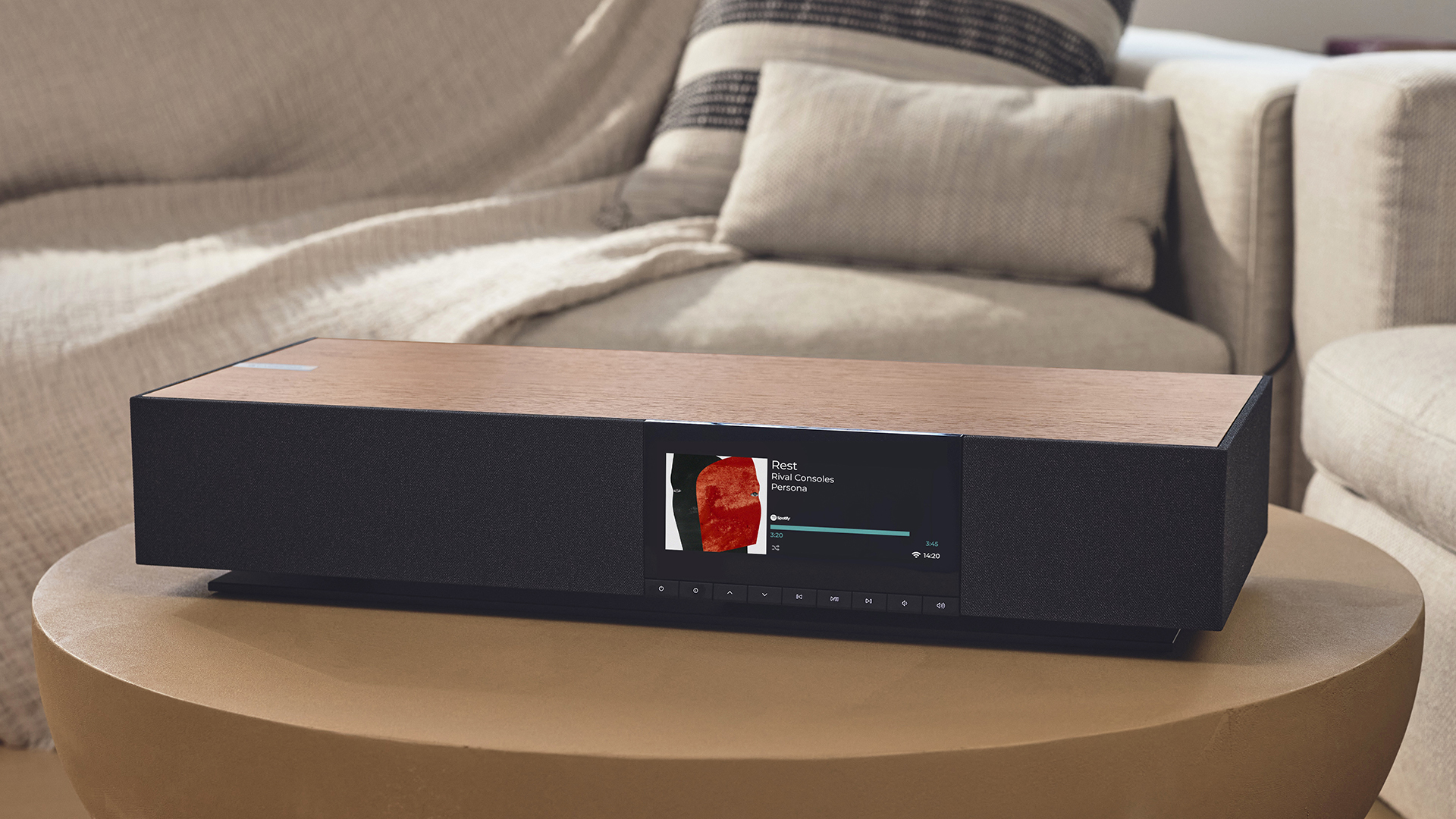
The Cambridge Audio Evo One sounds sensational thanks to a naturally wide and enveloping soundstage from its 14-speaker arrangement. With a unique design adding visual flair – as every wooden top will feature a different natural grain pattern – this all-in-one may well be audience-limited given its large-scale design, but for those who seek a hi-fi replacement capable of high-res streaming and hard-wired playback, it's just the ticket.
-
+
Sensational sound quality, naturally wide soundstage – and plenty of bass
-
+
High-resolution audio capable and caters for physical inputs too
-
+
StreamMagic app further elevates sound to match the room
-
+
Wooden-topped design adds a unique visual flair
-
-
At anti-social volume levels it loses cohesion – that bass has a ceiling limit
-
-
The physically large size won't suit all
Why you can trust T3
I was first introduced to Cambridge Audio's brand-new all-in-one system, the Evo One, in the former Sex Pistols' London home, where the walls are covered in John Lydon's graffiti. How very apt and, indeed, how very Cambridge Audio a setting in which to first listen to the British audio brand's tabletop system.
For this review, however, I've had the Cambridge Audio Evo One at home for over a month. It's been sat atop my upstairs AV cabinet where my turntables usually live, standing in as a replacement for a pair of bookshelf speakers and a separate subwoofer – and doing so amply.
The Evo One has completely taken over that space – easily done, as it's a big ol' wedge of a design, complete with heavyweight natural wooden top – both physically and aurally. I'm yet to scrawl various profane doodles across my office's walls, mind, but maybe that's forthcoming. Given the quality of this sound and how easy it is to get lost in Cambridge Audio's latest, I wouldn't put it past me yet...
Cambridge Audio Evo One: Price & Availability
At the time of writing, the Cambridge Audio Evo One is so in-demand that you'll have to join a waiting list to get hold of one. The product is in production, however, but as is the way with these things, shipping containers tend to take their sweet time to travel the long distances required for distribution.
In terms of pricing, the Evo One costs £1299 in the UK, $1499 in the USA, and AU$2499 in Australia. That puts it firmly among the best wireless speakers, asserting its position as a premium, luxury all-in-one product – the wooden top a significant nod to that aspiration.
Cambridge Audio Evo One review: What's New?
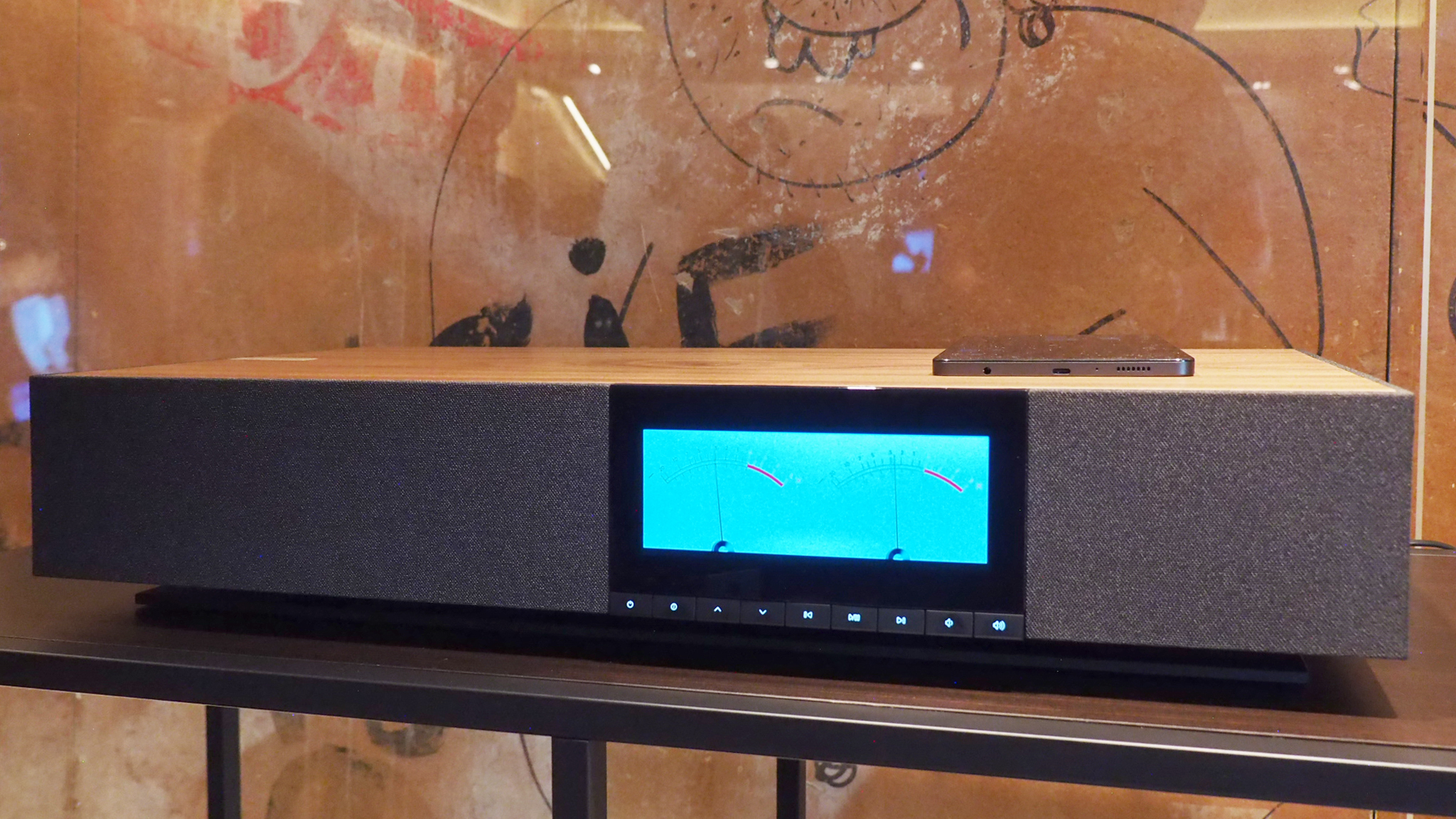

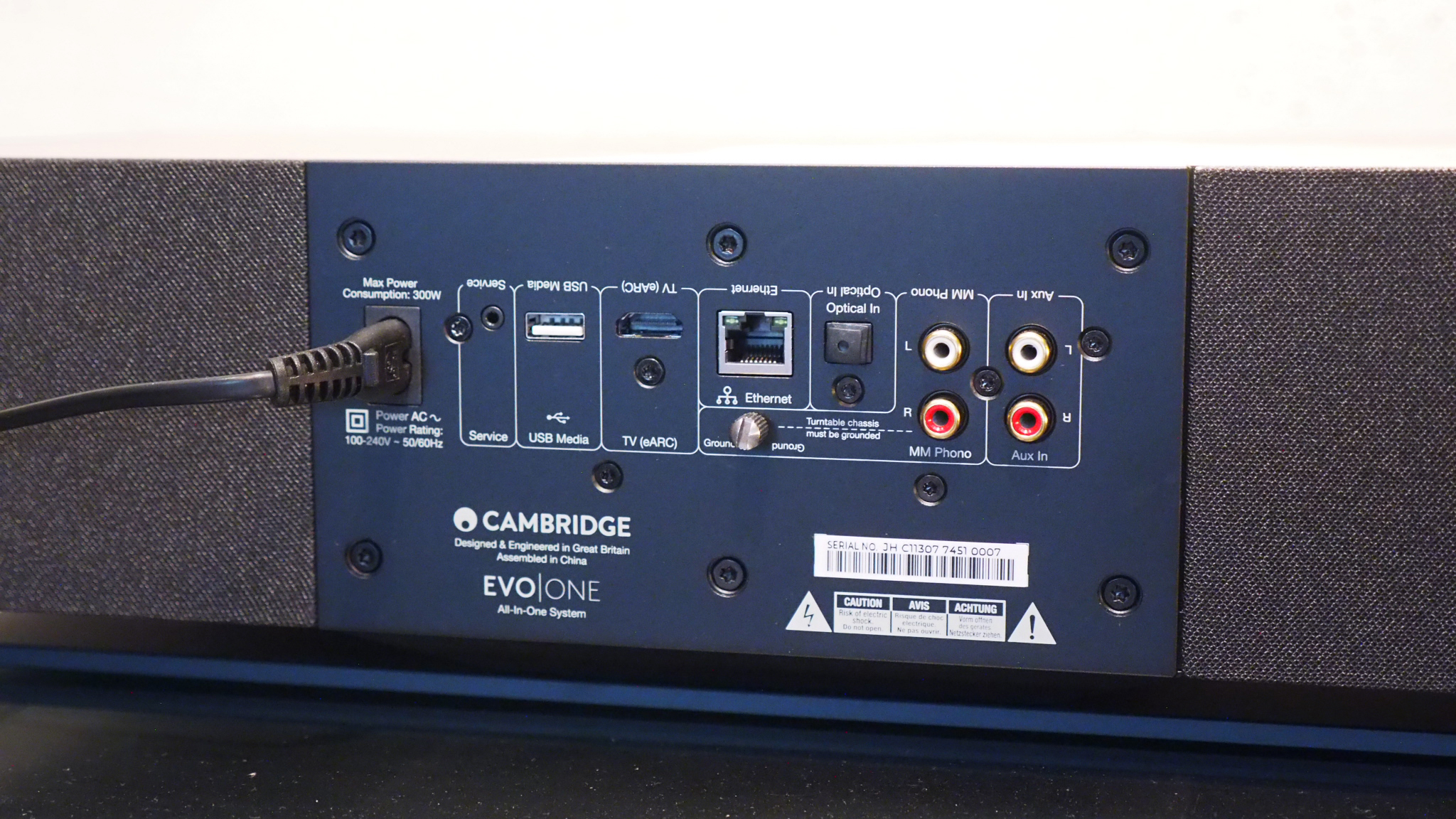
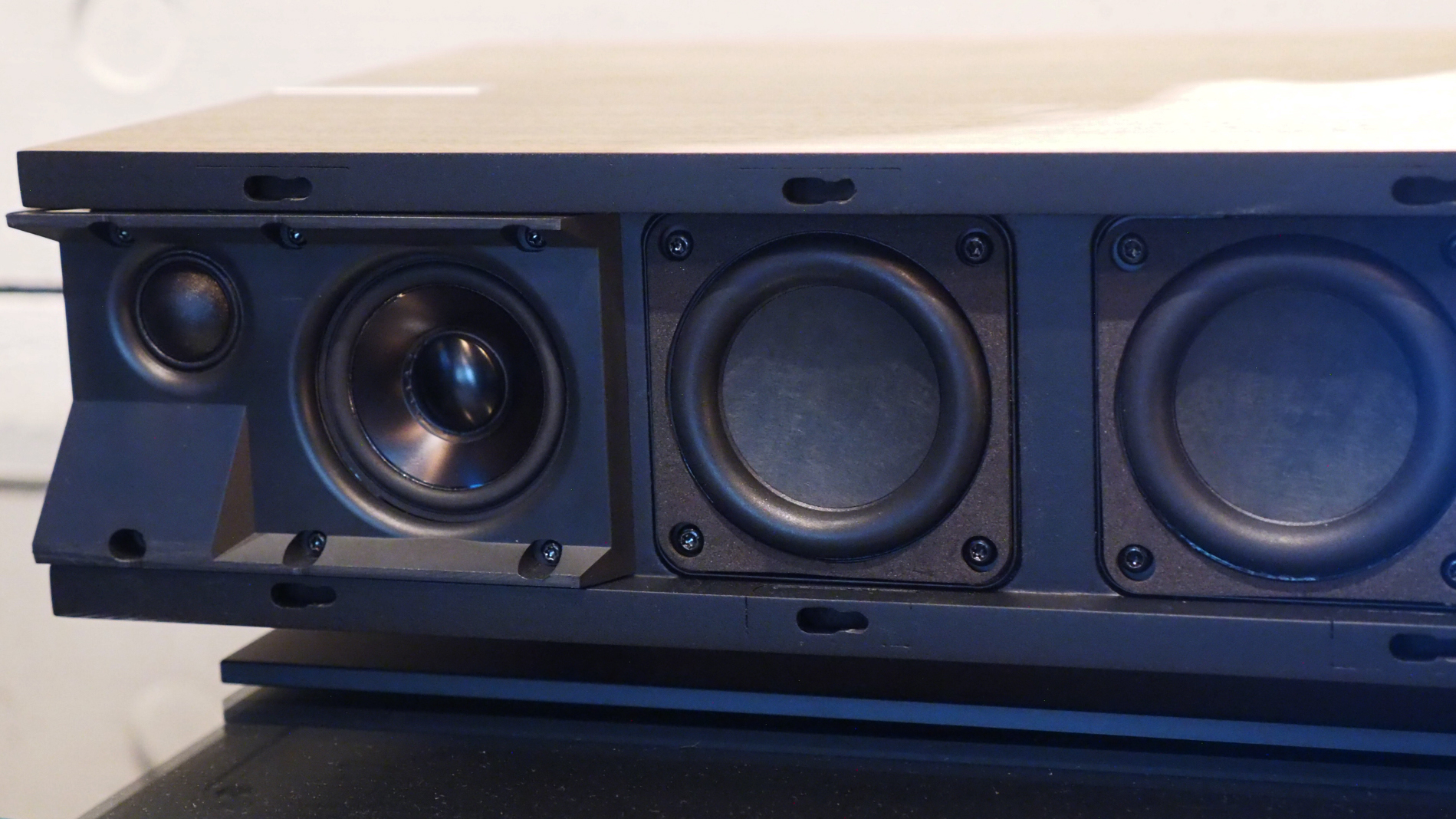
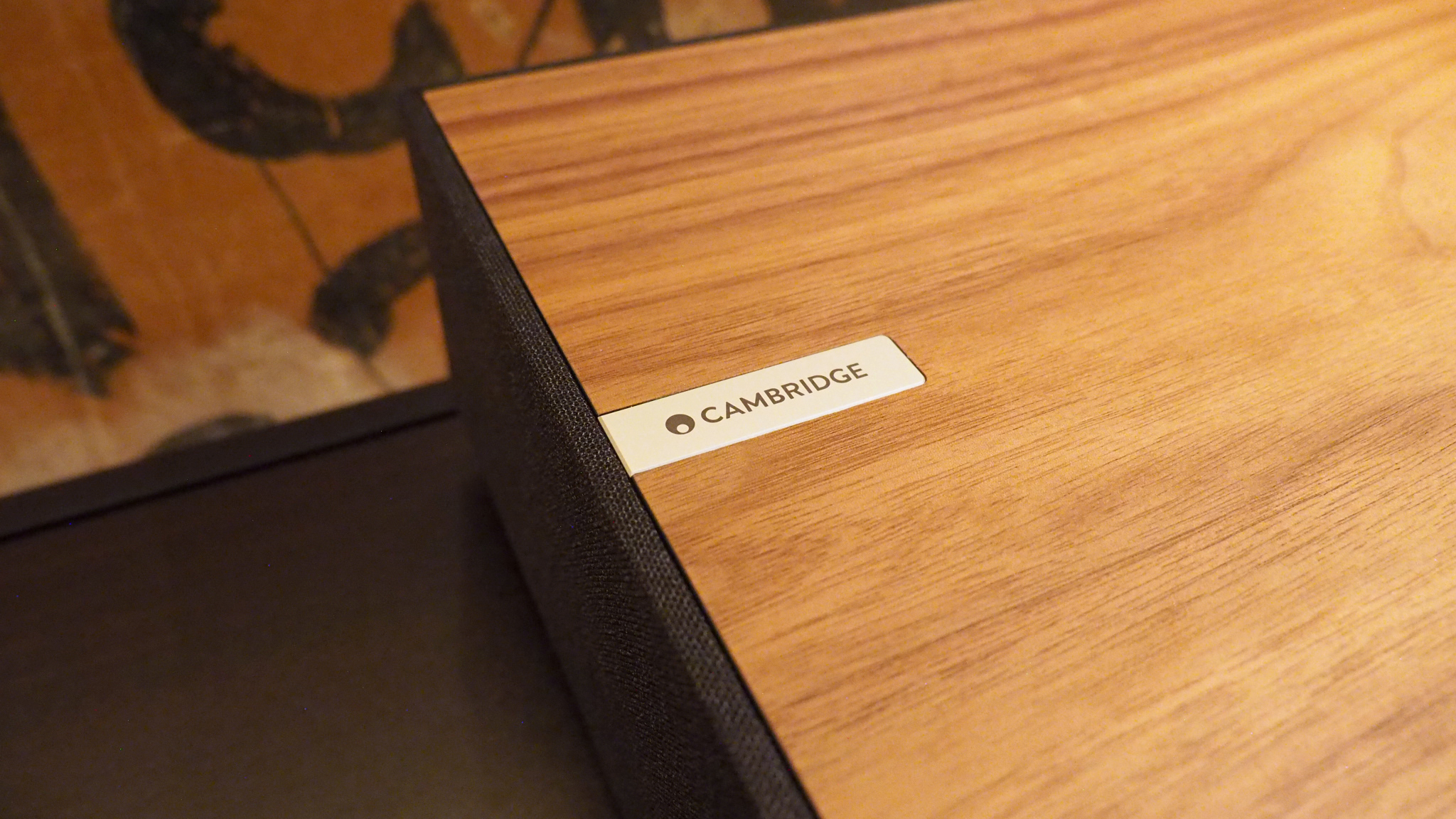
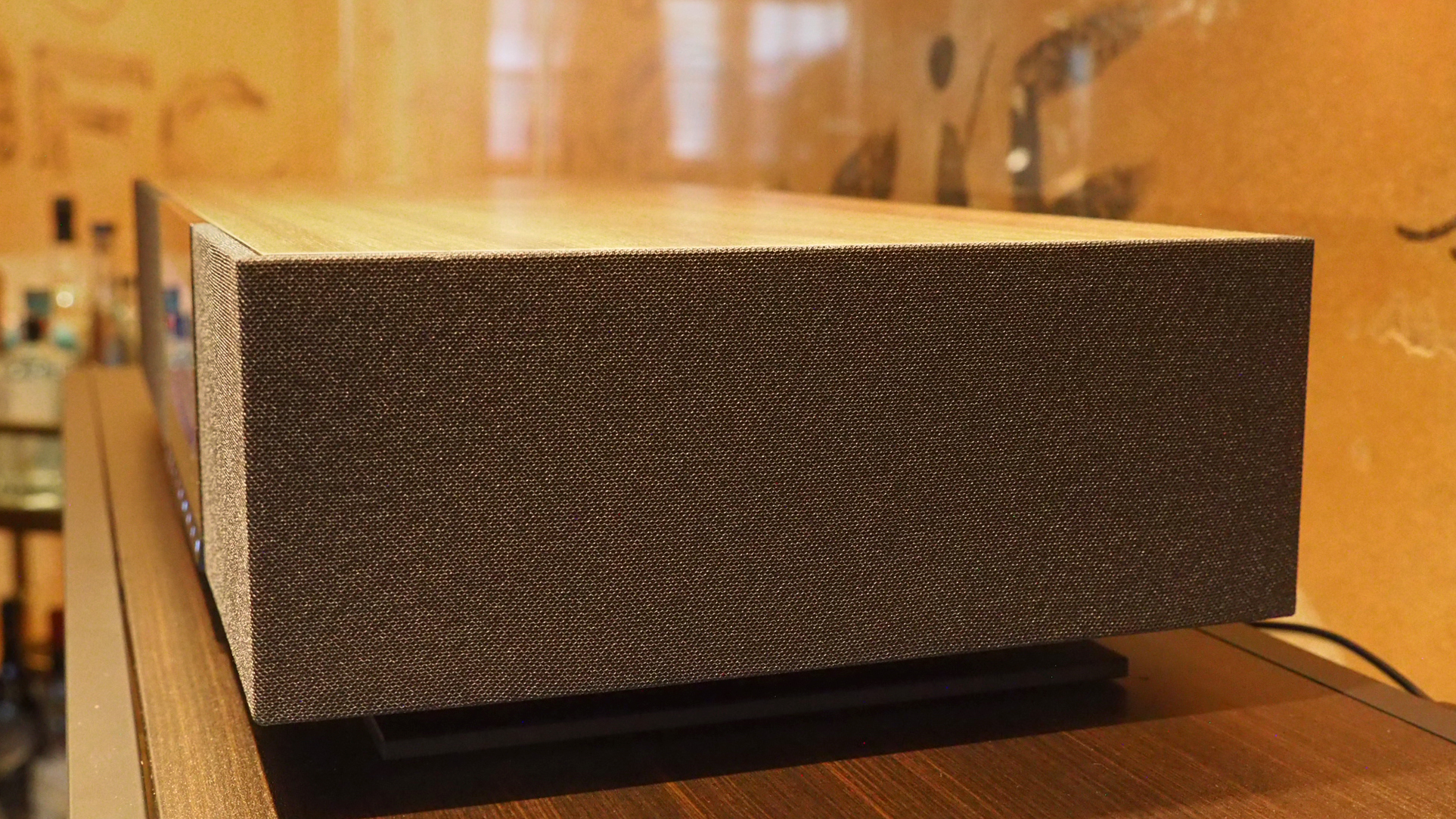
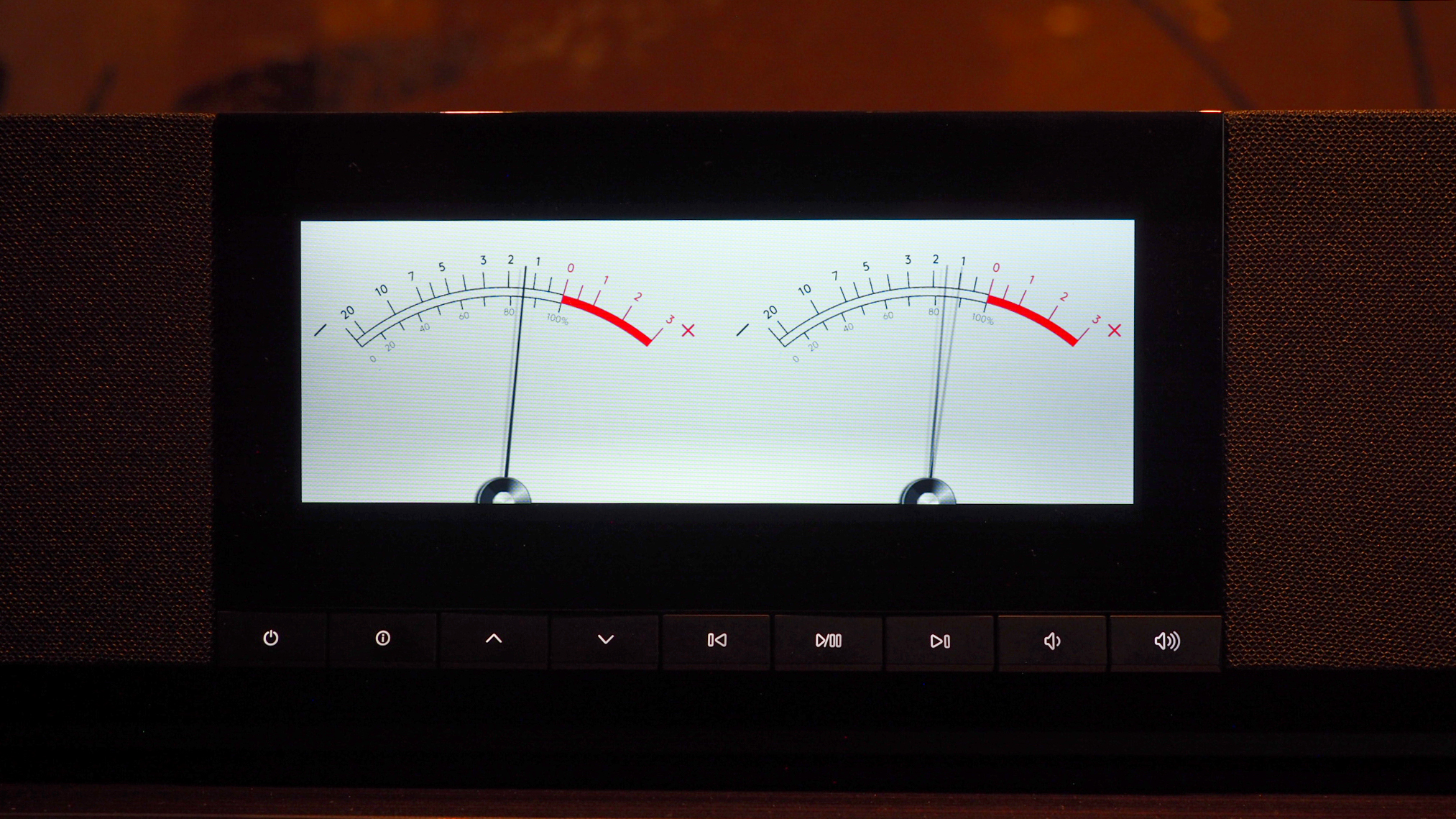
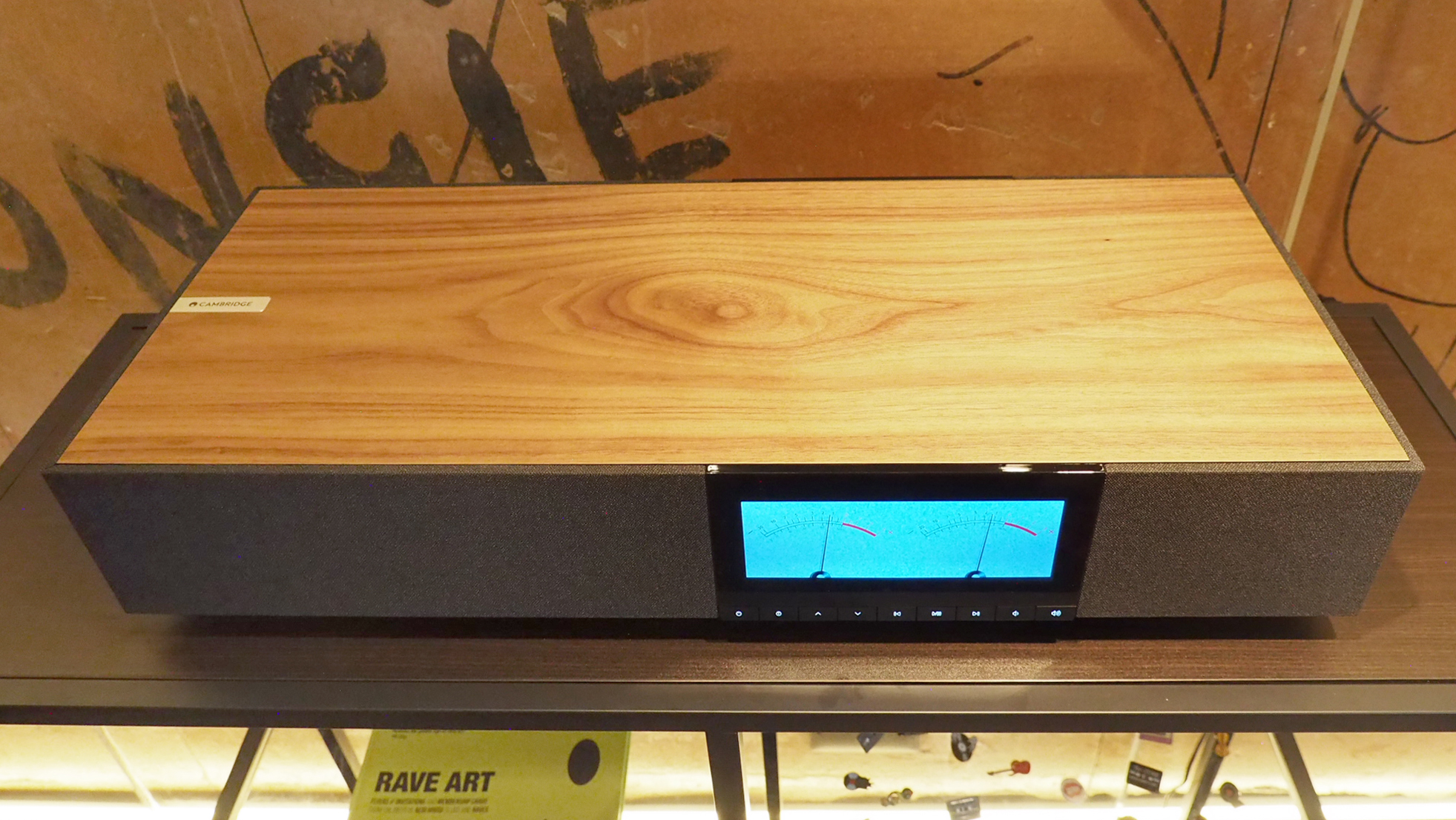
If you think the Evo One sounds a little pricey, then take into context that the brand's closest previous product of this type, Cambridge Audio's own Evo 75, launched at £1799 ($2250 / AU$3299) back in 2021 – and you'd have to add your own speakers to that.
I needn't have to remind you of inflation to show that, relatively speaking, the Evo One is therefore a comparative bargain – as this all-in-one contains 14 drivers and 700W of onboard amplification (50W per driver) to fill even large-size rooms with delightful audio. That also makes it the first product of its kind from Cambridge Audio.
Get all the latest news, reviews, deals and buying guides on gorgeous tech, home and active products from the T3 experts
It's not that other products of this type haven't existed before, it's just that they're fairly few and far between. The Naim Mu-so from almost a decade ago represents the closest comparison that I can, ahem, name – a system I've previously owned and adored (and which was followed up by the Mu-so 2). The Cambridge Audio, however, has an altogether less industrial chic and more humanistic touch to its look and feel – and its sound signature, too.
Cambridge Audio Evo One review: Connectivity
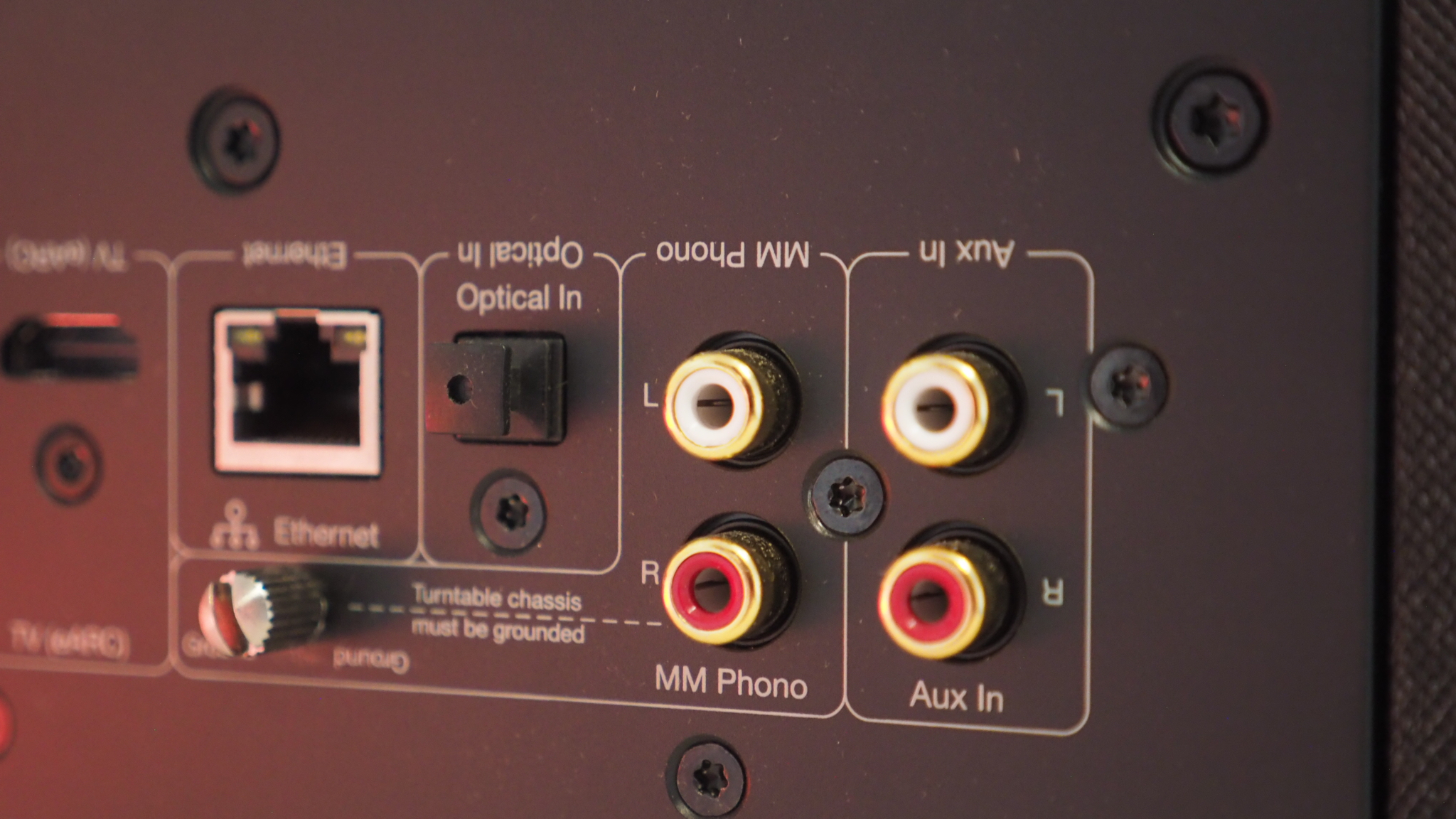
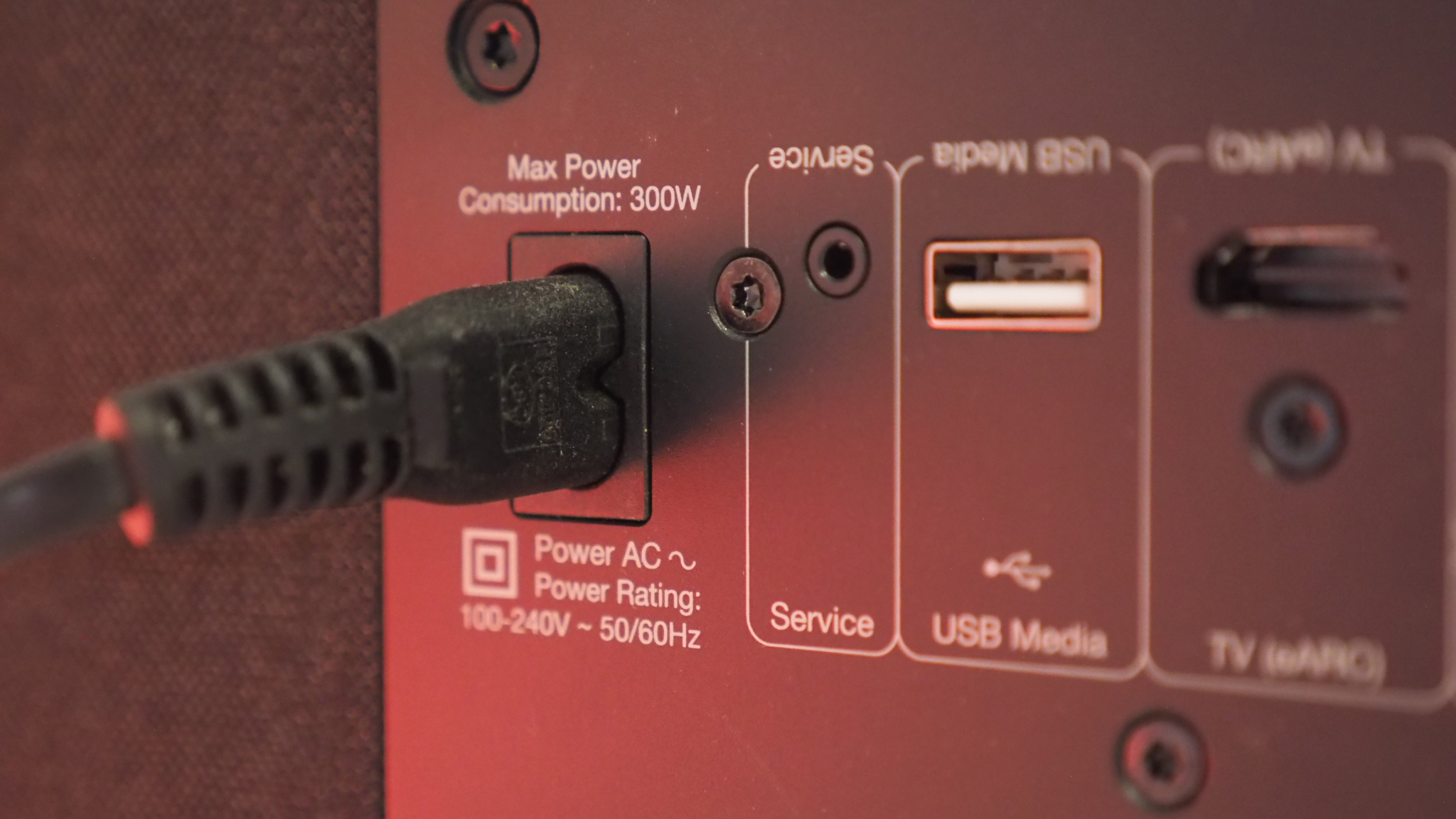
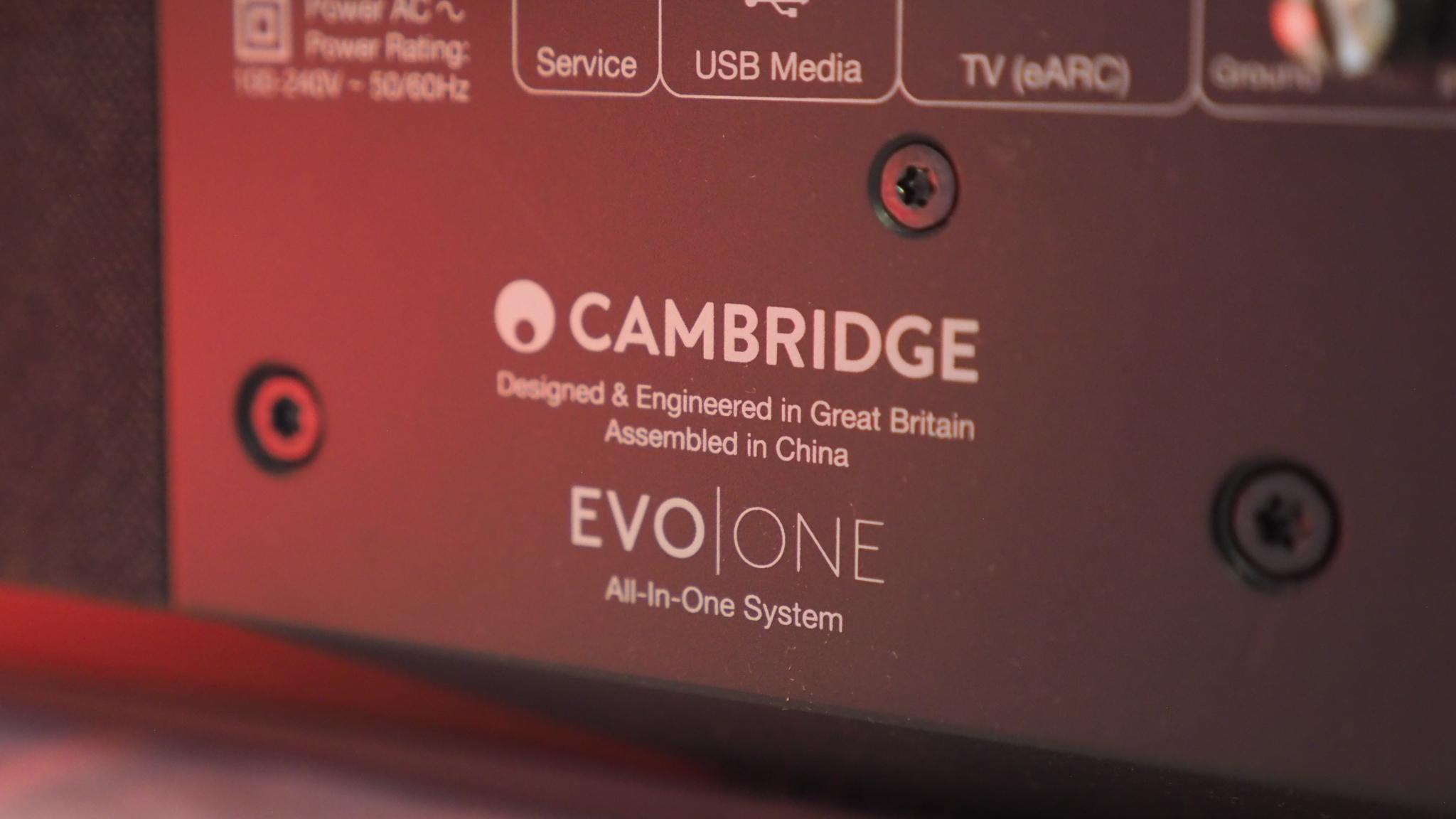
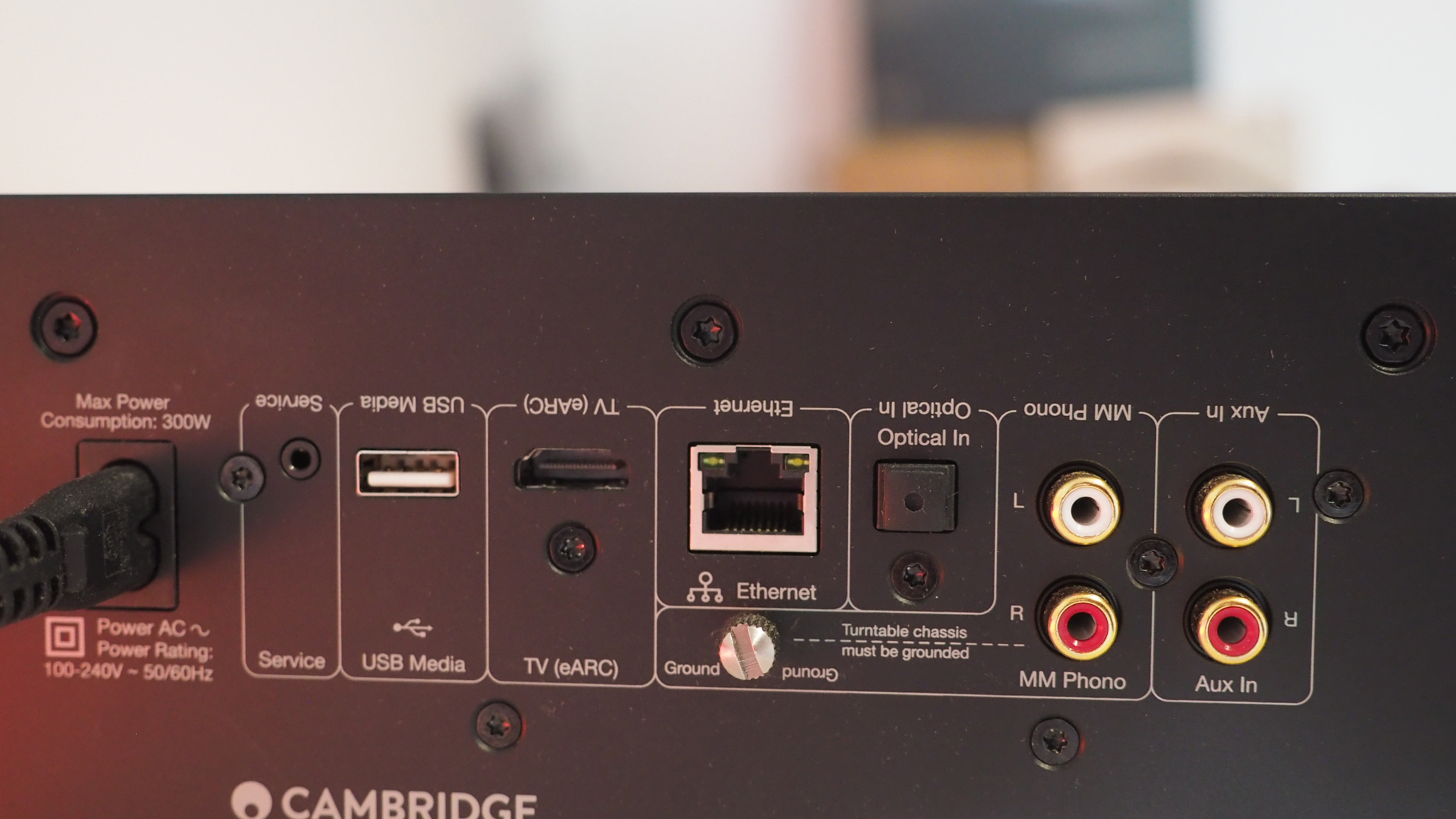
With the world more digitally focused these days, the Evo One tick-boxes all the necessaries in this department: stream directly from Spotify Connect, Tidal Connect, Deezer or Qobuz; there's also Wi-Fi, AirPlay 2, Google Cast, Roon multi-room, and Bluetooth. That means you can wirelessly get audio to or from the product easily however you wish.
Being a classic British hi-fi company, however, I'm not surprised that Cambridge Audio has welcomed those of us who like to plug in from an external source with open arms. Around the back is a stereo MM Phono for plugging in a turntable (with an essential ground terminal featuring to the side of that), while a neighbouring standard stereo Phono set ensures AUX input from, well, whatever you want really – but a CD Player being the likely principle purpose.
It doesn't end there either: seeing a clear opportunity for the Evo One to act as a soundbase or replacement for one of the best soundbars, there's an HDMI eARC, optical input, Ethernet, and USB port (for media, not service). My only disappointment here is that there's not an additional HDMI for passthrough, as losing one of (typically) two HDMI 2.1 ports on the best TVs of today never feels ideal when there's so much else to plug in. But for most people using this as a standalone music system that's going to be of zero consequence.
Cambridge Audio Evo One review: Design & Setup
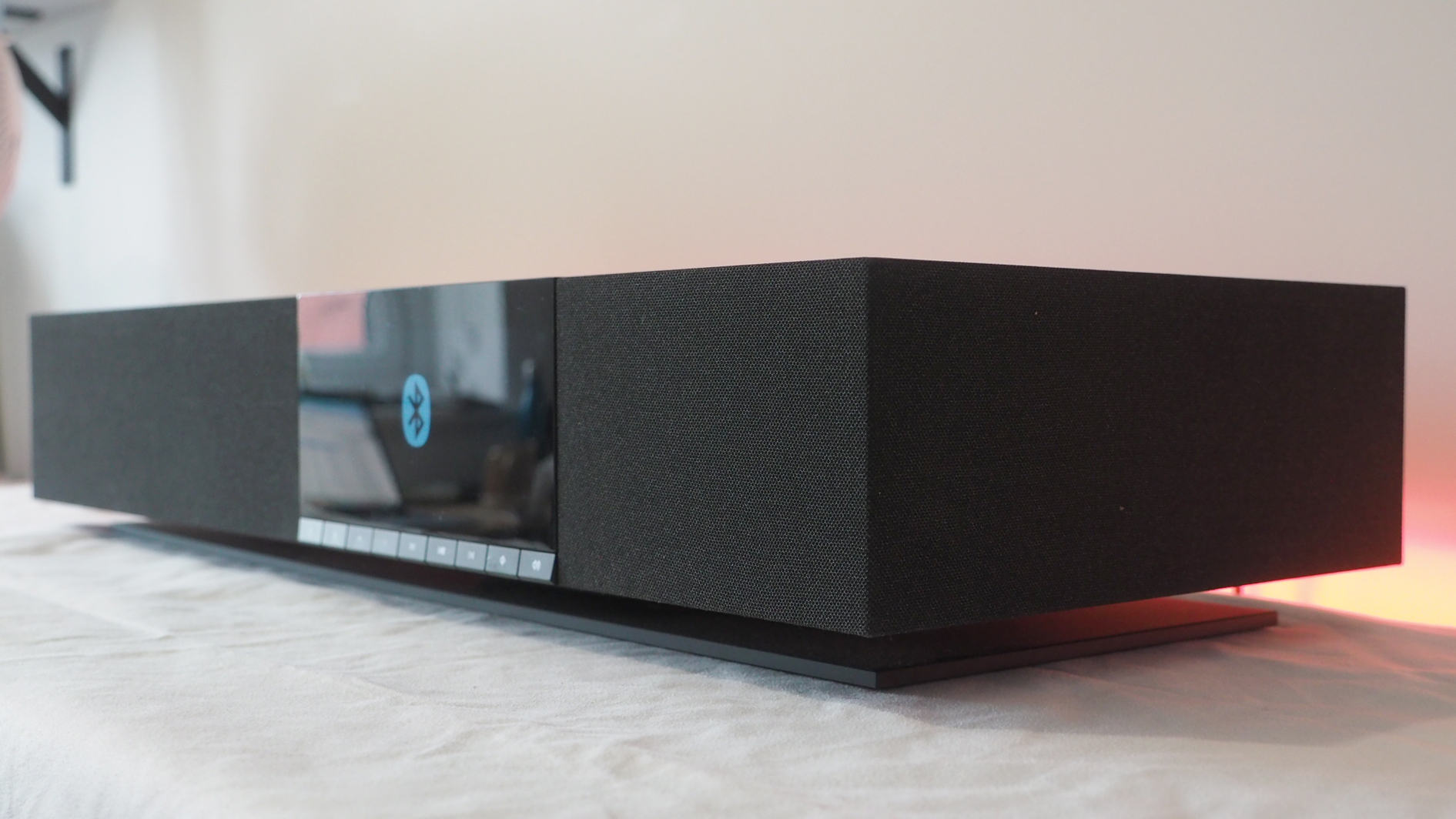
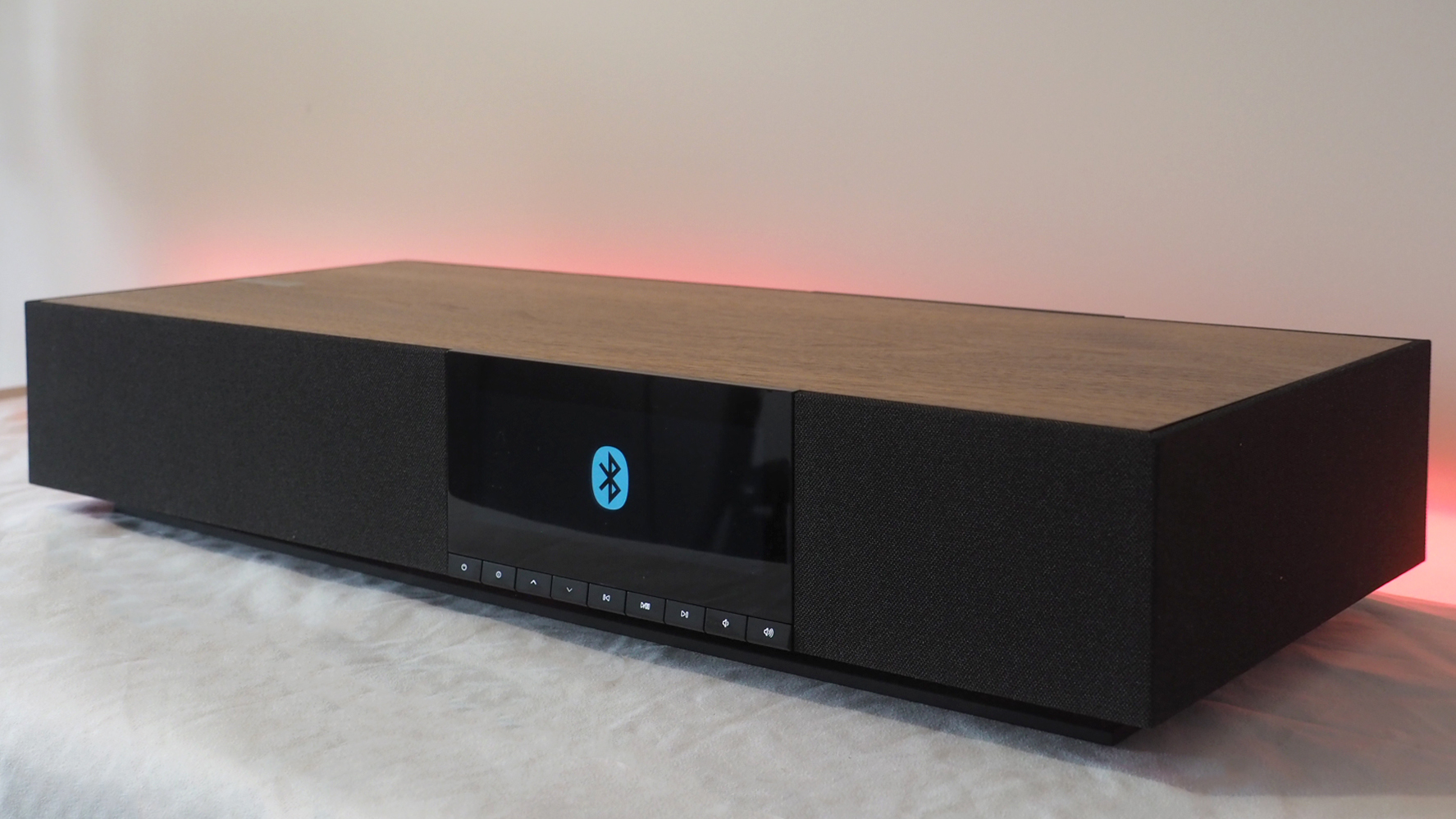
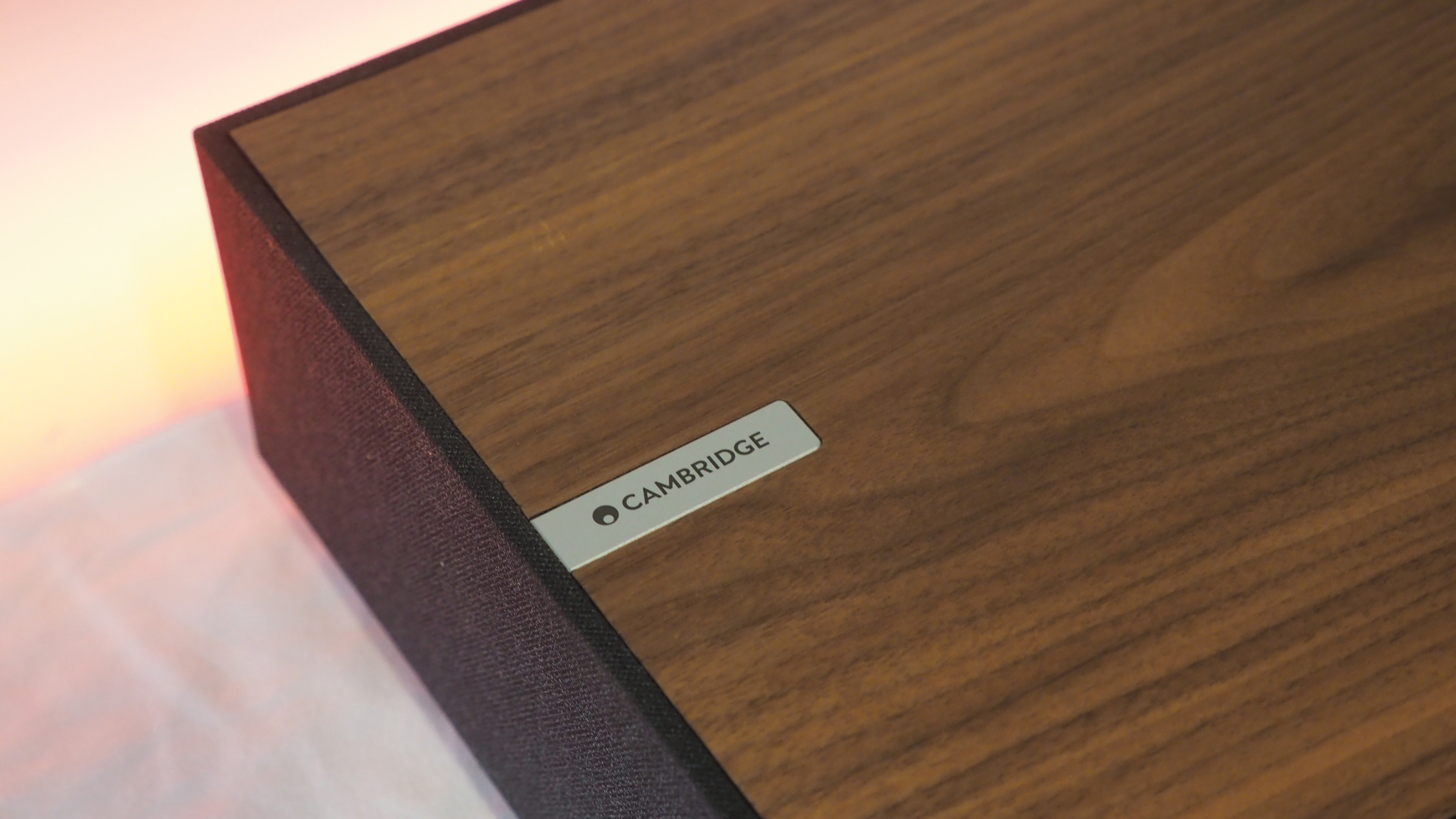
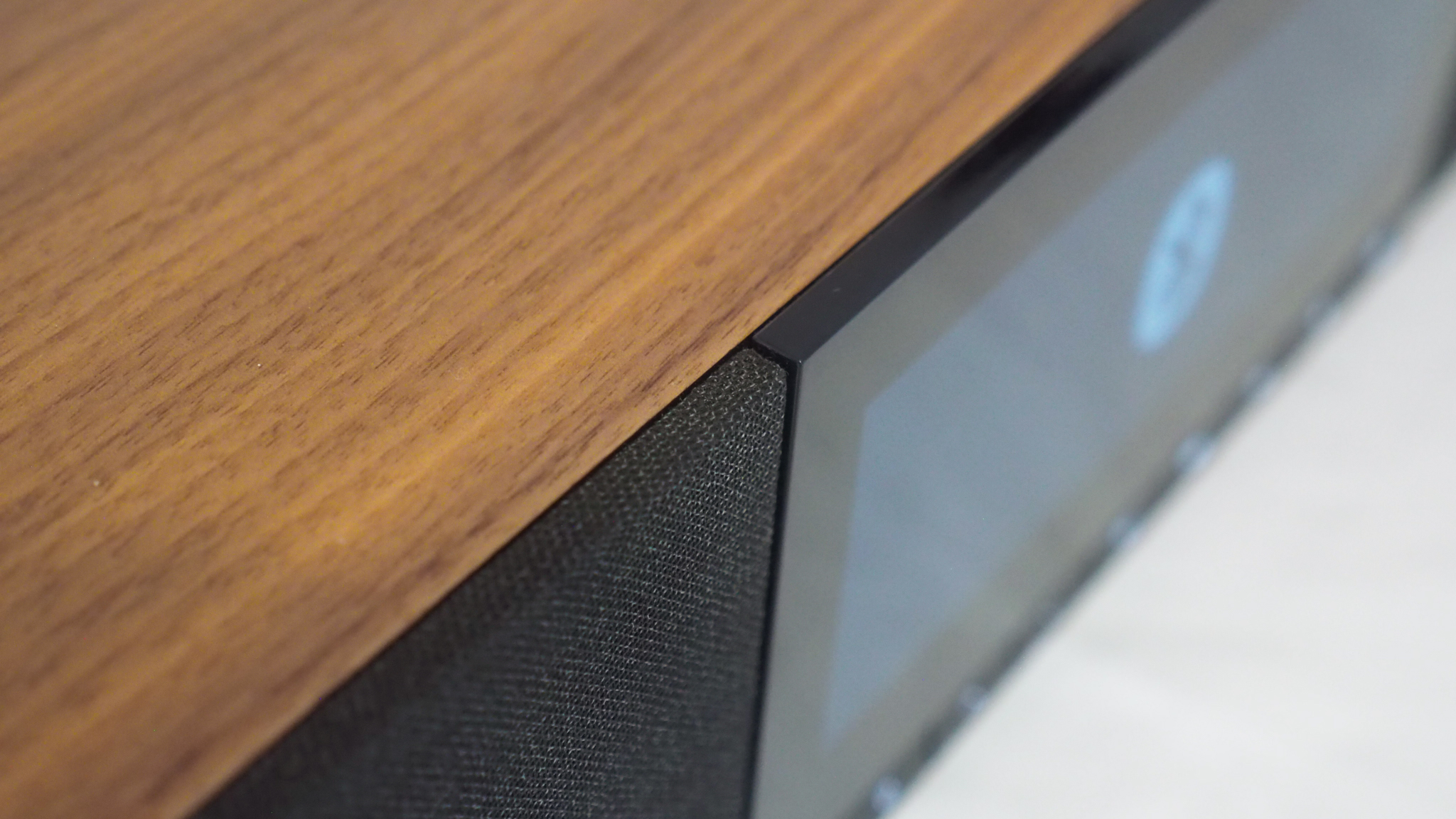
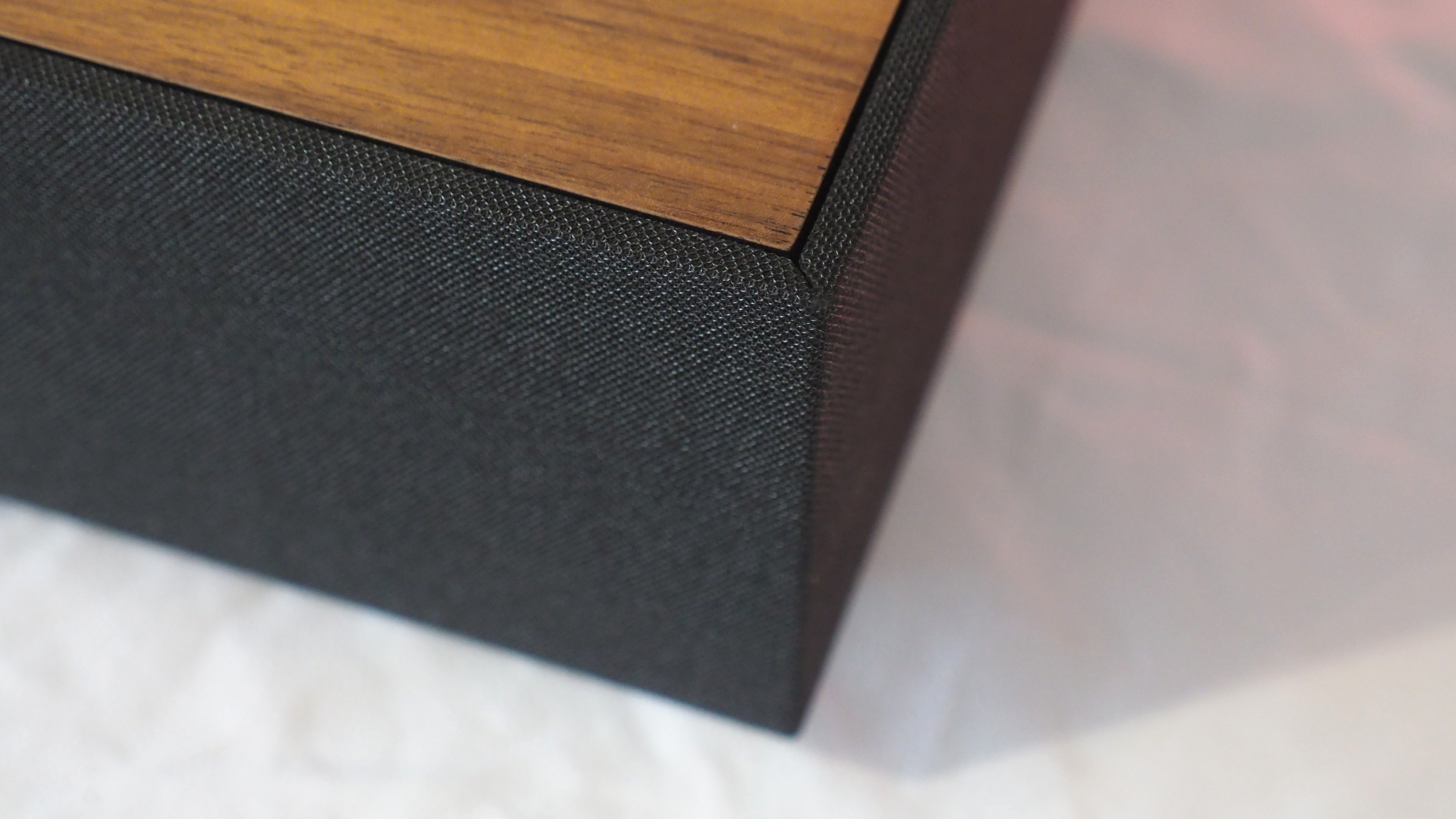
The Cambridge Audio Evo One arrived in a suitably large box, because it's a suitably – or unsuitably, depending on your stance – large product. Measuring 67.5cm across its front, 29cm deep, and standing 12.9cm high from its attached base. That's pretty large – you could rest it across the top of an average UK bathtub anyway. I say that for visualisation purposes only, because I certainly can't think of a worse place to place your electronics.
Not that big equals bad, especially when it comes to audio products. Quite the opposite, really, as more space to move air is needed for bass output for one. It's down to whether you have the space for what is essentially a desktop or tabletop device – it's likely going to take up half of a standard desk size, for example, so this isn't just a little speaker you pop next to your laptop when working from home. No, this is a dedicated speaker system that demands – and, indeed, deserves – to be positioned in pride of place.
The design is relatively functional at first look: front-on the material panel covers up the drivers within (but you can pop this off, should it be needed), with a 6.8-inch LCD display aligned off-centre to the right, and a suite of physical buttons beneath to handle on/off, toggle up/down for selection, info for cycling through displays, the classic volume up/down, and the usual trio of play/pause and skip forward/backwards. A separate little black plastic remote also comes included.
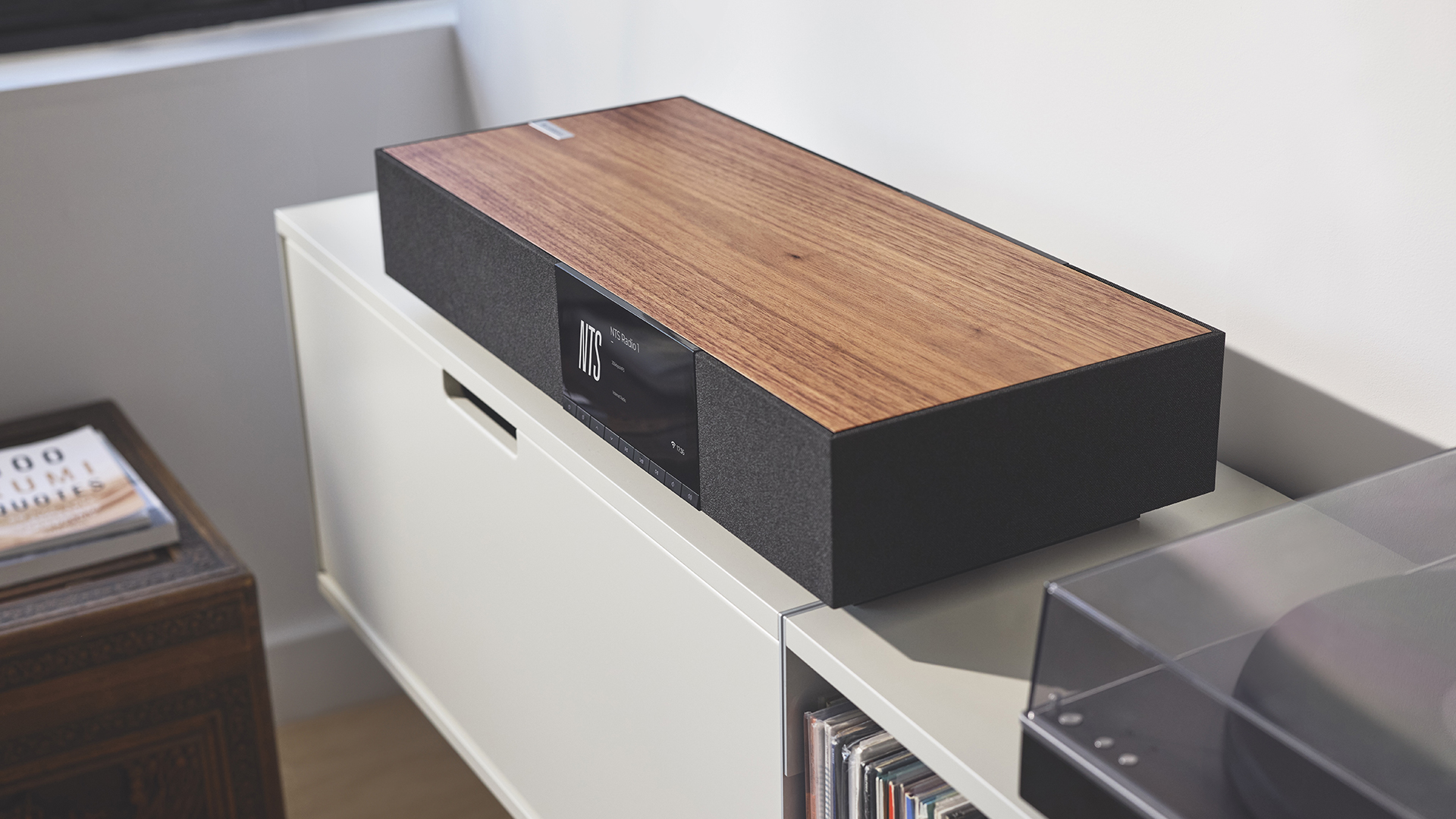


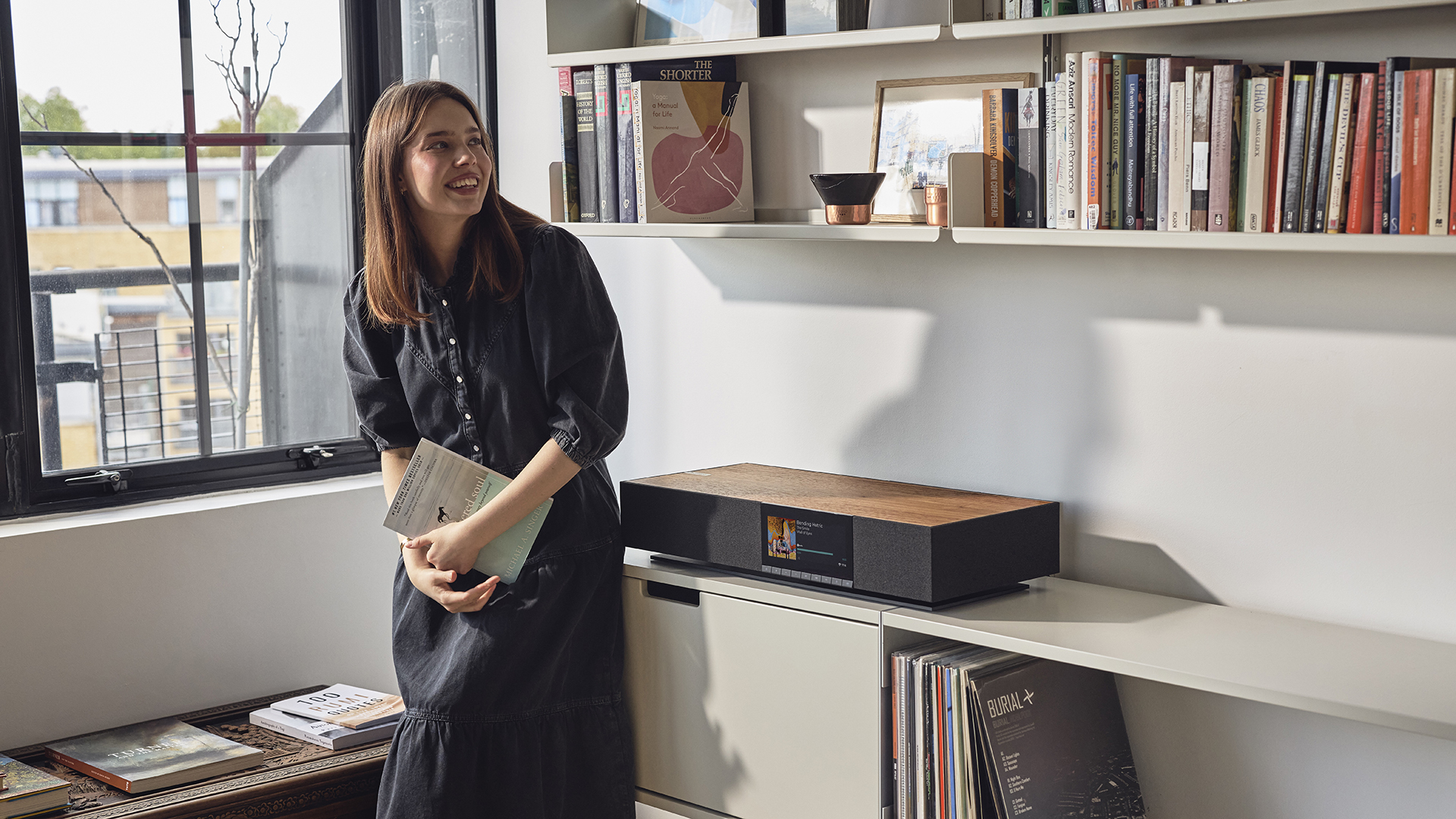
But you won't always be looking at the Evo One front-on, and here's where its pièce de résistance is showcased: that natural wood veneer top. It's FSC-certified walnut and, as it's real wood, each Evo One will look different – that's down to mother nature. I think this gives the product a needed warmth; something to prevent it from just looking like a functional box.
After lugging the 14.5kg (32lbs) unit into place and plugging it into the wall socket, setup is basically done. It's then a case of grabbing the StreamMagic app via an iOS/Android device and walking through the connectivity steps. The app gives a bunch of extra adjustments, too, not that you have to use them. If you just want to plug in a turntable and adjust the source using the buttons you're most free to do so.
I like the inclusion of that 6.8-inch LCD display for presenting artwork or the input source. There's even a VU meter display if you fancy a fun digital output. If you don't like it then the remote control features three levels of control: bright, less bright, or off. So the choice is yours – but I'm pleased it can be deactivated should you not want the light distraction, especially useful given the HDMI option.
Cambridge Audio Evo One review: Sound Quality
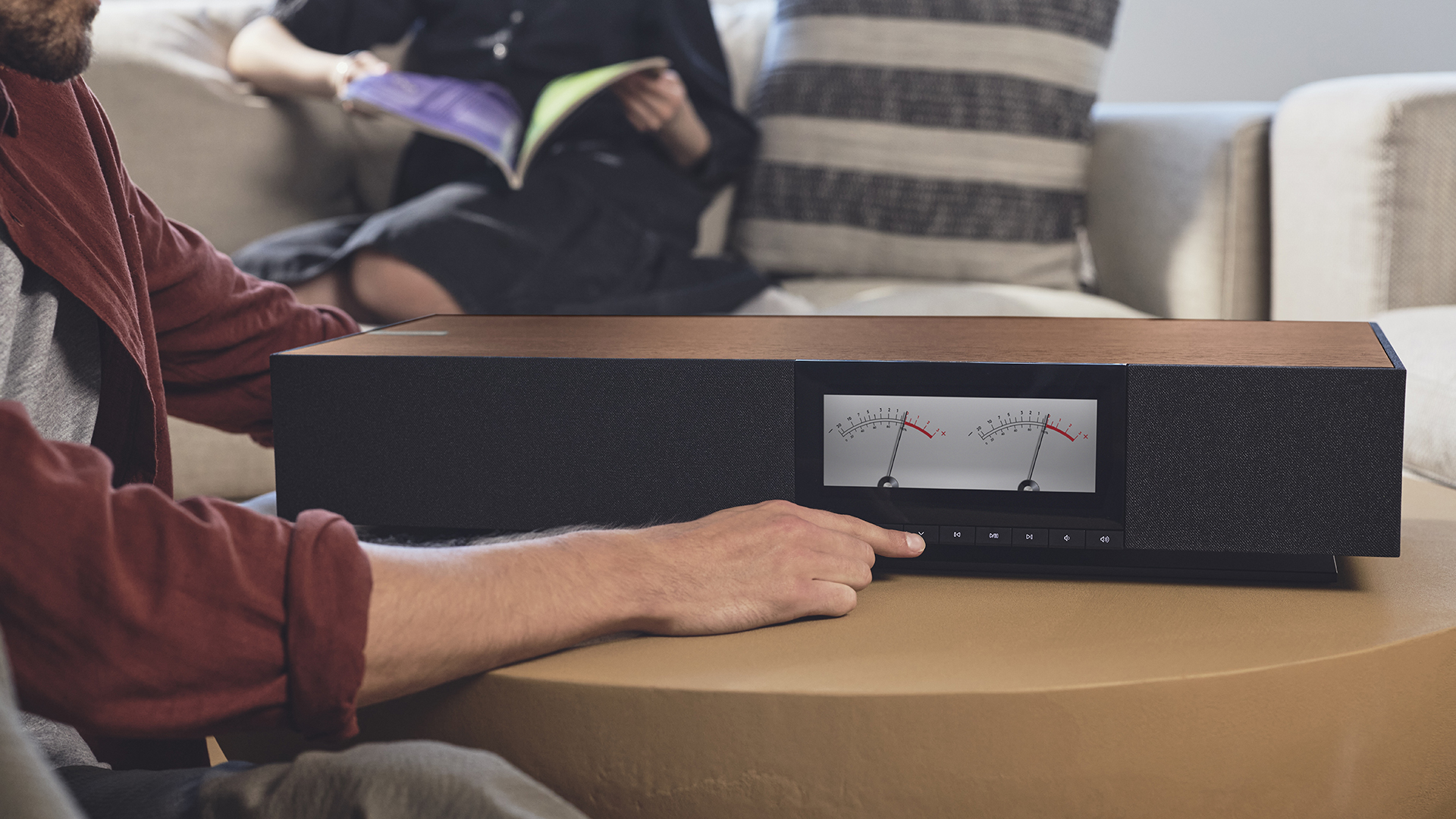
With Cambridge Audio's established history in hi-fi, it's also no surprise that the Evo One is replete with support for plenty of audio formats – including the ability to handle high-resolution. So whether you want to stream, or feed it MP3, WMA, AIFF, WAV, FLAC, ALAC files up to 32-bit/192kHz, that's no problem.
Out of the box and everything sounds great. But here's where the StreamMagic app comes into full effect, as there are various settings where the sound profile can be tweaked to perfection. The option to adjust a 7-band EQ (to +3dB/-6dB) and factor in speaker placement (from 5cm to 50+cm from a wall) and room compensation (for offsetting hard/soft edges potential adsorption/reverberation) means the Evo One can sound sensational.
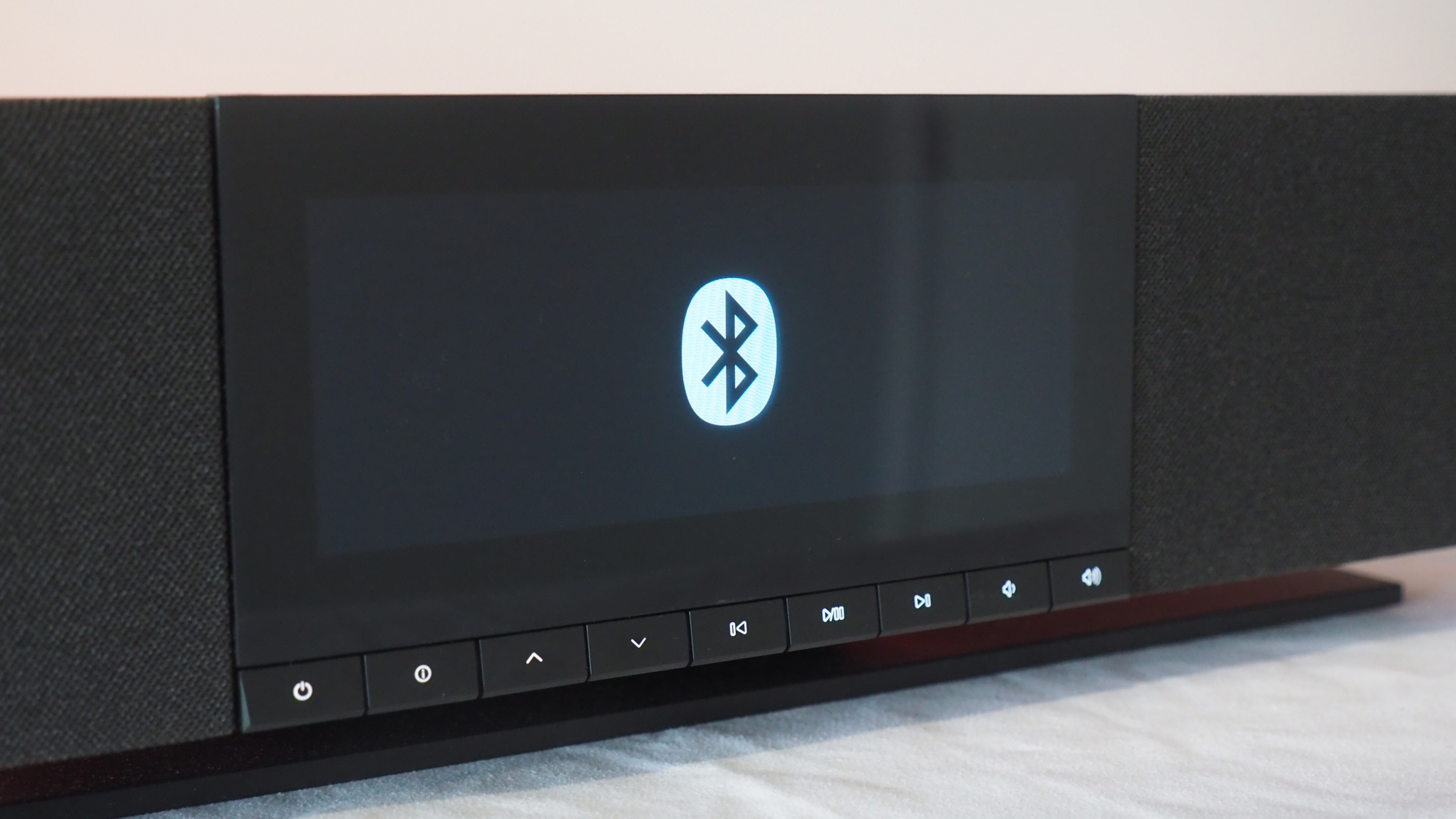
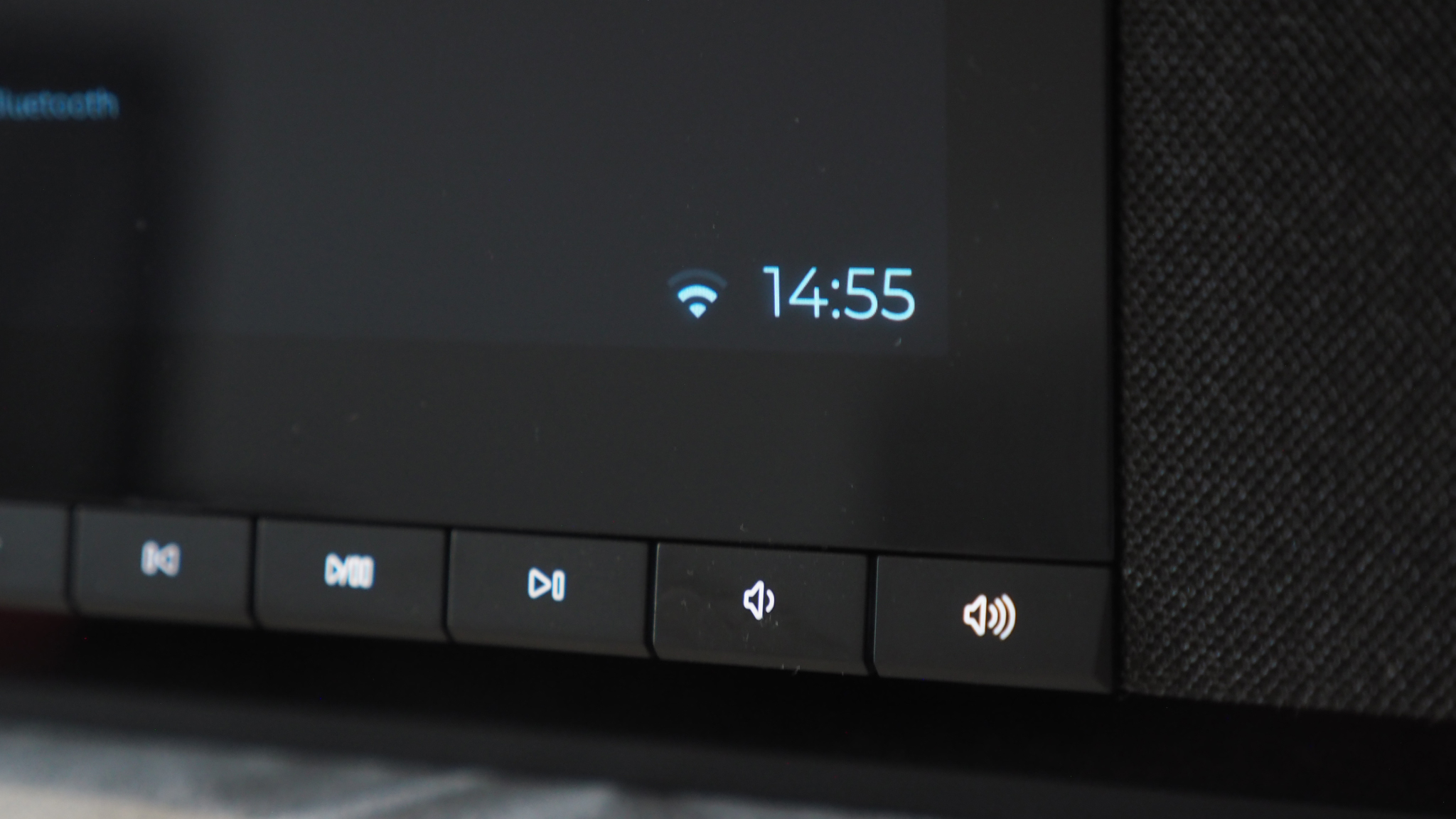
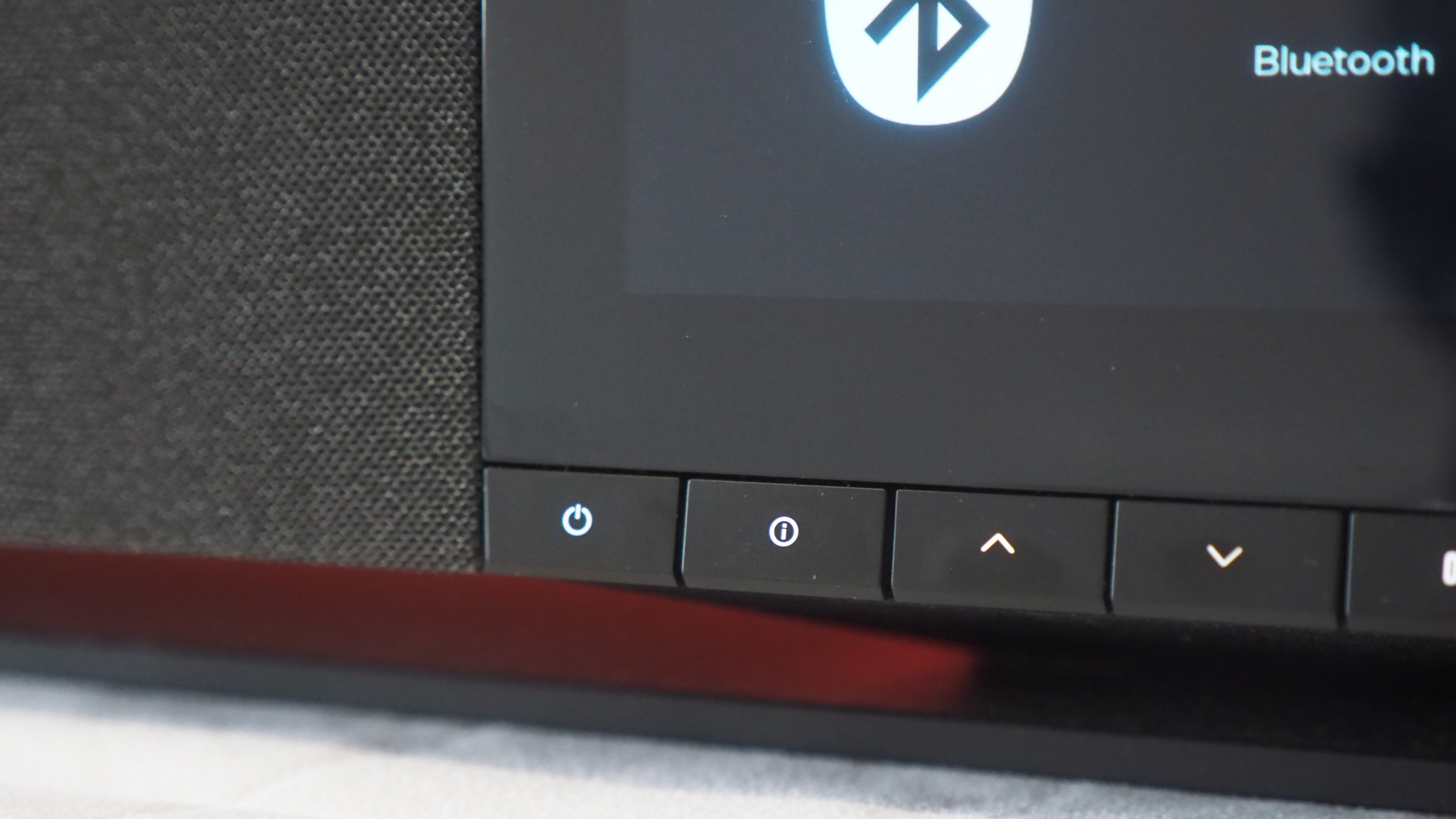
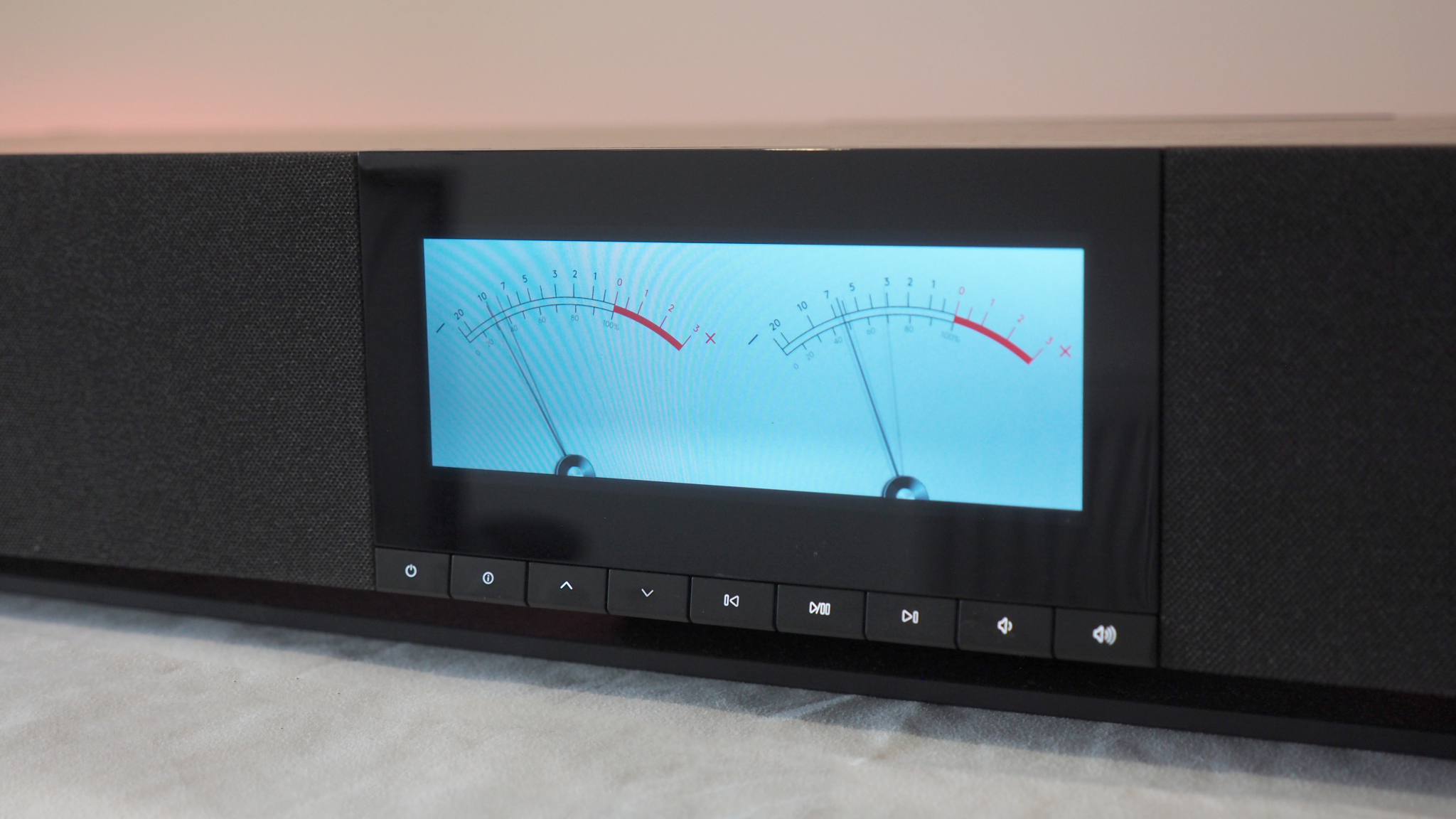
However, that does come with some caveats. If I'm to be particularly critical then the powerful bass certainly has a ceiling when the volume is raised. The Evo One can go really loud, but when pushing into its 70+ (out of 100) volume level, its six 2.75-inch woofers can get a bit 'thumpy'. Quite frankly, however, pushing into the 50+ region is already anti-social, as even around the 30 mark my office is flushed with audio loud enough to get complaints. There's a volume limiter in the app though.
Listening within sensible levels – and I wouldn't call myself an especially sensible person, frankly, as I like my music loud – and the Evo One sounds well-balanced, with ample dynamic range to present recordings emotively, yet enough impact to really lose yourself. As a lover of underground music, bass is an essential aspect of any system for me, and after listening to Tourist's Radio One Essential Mix a few too many times the system has proven itself robust.
Don't worry, I also fed it some high-quality sources, including crackly heavyweight 12-inch vinyl from my ageing collection. That's where uncompressed clarity is really allowed to let loose and do its thing. And as the Evo One outputs from no less than 14 drivers, the soundstage sounds incredibly wide and spacious – no surprise as the four tweeters, four mid-range cones, and six woofers literally fire out the front, side and rear of the device. No unwarranted signal processing here, just on-point arrangement.
Cambridge Audio Evo One review: Verdict

The Cambridge Audio Evo One is an epic all-in-one system that sounds sensational. Its 14-speaker arrangement outputs a naturally wide and enveloping soundstage that's dynamic yet impactful – and there's plenty of bass too.
Sure, the large-scale design may only appeal to a certain audience, while anti-social volume levels lose their cohesion – but if you're looking for a tabletop hi-fi replacement then, compared to its key Naim and Ruark competition, Cambridge Audio is just the ticket.
That I'm in no rush to reinstate my bookshelf speakers and subwoofer is only testament to how impressed I am by the Evo One. Now I might even have to go scrawl some new-wave punk graffiti on the walls to the effect...
Also consider
Honestly, there's not a whole lot out there. The Naim Mu-so 2 is certainly an older option – if you can find one available at a good price. It's got an altogether colder visual from its industrial design, though, compared to the Cambridge Audio's warmer wood-topped finish.
Most directly comparable, however, is Ruark Audio's R410 system. This goes all-in on the wooden design language and is of a very similar asking price, too. I reckon you'll get more bass out of the Cambridge Audio option though.
Take a slight left turn and the Bowers & Wilkins Zeppelin is certainly an alternative, although without a front LCD display it's got a different kind of appeal – one that's more of a visual design statement, really. This may suit some buyers better than Cambridge Audio's alternative tabletop-like design, though, plus it's a far more affordable alternative.

Mike is T3's Tech Editor. He's been writing about consumer technology for 15 years and his beat covers phones – of which he's seen hundreds of handsets over the years – laptops, gaming, TV & audio, and more. There's little consumer tech he's not had a hand at trying, and with extensive commissioning and editing experience, he knows the industry inside out. As the former Reviews Editor at Pocket-lint for 10 years where he furthered his knowledge and expertise, whilst writing about literally thousands of products, he's also provided work for publications such as Wired, The Guardian, Metro, and more.
